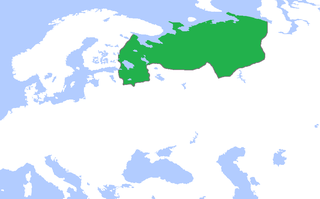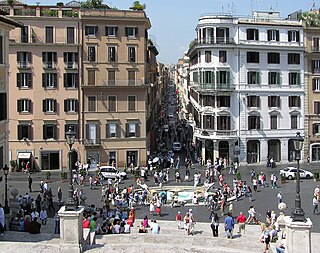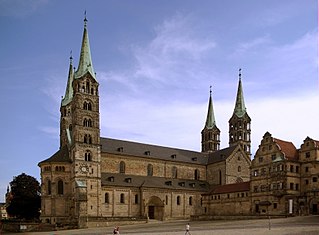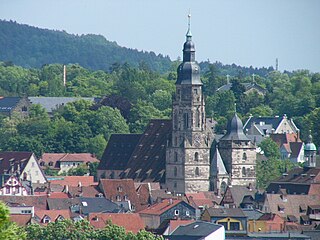Notes and references
- ↑ Greg. Hist. VIII.34.
- ↑ "Petrus Damiani: Opera poetica Pag 89". Archived from the original on 2012-02-15. Retrieved 2016-12-10.
- ↑ ""Sermones in Cantica canticorum, I - XVII" - Bernardus Claraevallensis". 17 September 2015.
The Prince of Darkness is a term used in John Milton's poem Paradise Lost referring to Satan as the embodiment of evil. It is an English translation of the Latin phrase princeps tenebrarum, which occurs in the Acts of Pilate , written in the 4th century, in the Historia Francorum by Gregory of Tours (6th century), [1] in the 11th-century hymn Rhythmus de die mortis by Pietro Damiani, [2] and in a sermon by Bernard of Clairvaux [3] from the 12th century.

Black is a color which results from the absence or complete absorption of visible light. It is an achromatic color, without hue, like white and grey. It is often used symbolically or figuratively to represent darkness. Black and white have often been used to describe opposites such as good and evil, the Dark Ages versus Age of Enlightenment, and night versus day. Since the Middle Ages, black has been the symbolic color of solemnity and authority, and for this reason it is still commonly worn by judges and magistrates.

The Sermon on the Mount is a collection of sayings spoken by Jesus of Nazareth found in the Gospel of Matthew that emphasizes his moral teachings. It is the first of five discourses in the Gospel and has been one of the most widely quoted sections of the Gospels.

Jacques-Bénigne Lignel Bossuet was a French bishop and theologian renowned for his sermons and other addresses. He has been considered by many to be one of the most brilliant orators of all time and a master French stylist.

In England, the Lord of Misrule – known in Scotland as the Abbot of Unreason and in France as the Prince des Sots – was an officer appointed by lot during Christmastide to preside over the Feast of Fools. The Lord of Misrule was generally a peasant or sub-deacon appointed to be in charge of Christmas revelries, which often included drunkenness and wild partying.

A sermon is a religious discourse or oration by a preacher, usually a member of clergy. Sermons address a scriptural, theological, or moral topic, usually expounding on a type of belief, law, or behavior within both past and present contexts. Elements of the sermon often include exposition, exhortation, and practical application. The act of delivering a sermon is called preaching. In secular usage, the word sermon may refer, often disparagingly, to a lecture on morals.

The Christianization of Kievan Rus' was a long and complicated process that took place in several stages. In 867, Patriarch Photius of Constantinople told other Christian patriarchs that the Rus' people were converting enthusiastically, but his efforts seem to have entailed no lasting consequences, since the Primary Chronicle and other Slavonic sources describe the tenth-century Rus' as still firmly entrenched in Slavic paganism. The traditional view, as recorded in the Primary Chronicle, is that the definitive Christianization of Kievan Rus' dates happened c. 988, when Vladimir/Volodymyr the Great was baptized in Chersonesus (Korsun) and proceeded to baptize his family and people in Kiev. The latter events are traditionally referred to as baptism of Rus' in Ukrainian and Russian literature.

The Novgorod Republic was a medieval state that existed from the 12th to 15th centuries in northern Russia, stretching from the Gulf of Finland in the west to the northern Ural Mountains in the east. Its capital was the city of Novgorod. The republic prospered as the easternmost trading post of the Hanseatic League, and its people were much influenced by the culture of the Byzantines.

According to legend, Rufinus of Assisi, was the first bishop of this city and a martyr.

Richard FitzRalph was a scholastic philosopher, theologian, and Norman Irish Archbishop of Armagh during the 14th century. His thought exerted a significant influence on John Wycliffe's.

Popoli is a comune and town in the province of Pescara in the Abruzzo region of Italy.
Damiano Damiani was an Italian screenwriter, film director, actor and writer. Poet and director Pier Paolo Pasolini referred to him as "a bitter moralist hungry for old purity", while film critic Paolo Mereghetti said that his style made him "the most American of Italian directors".

St Paul's Cross was a preaching cross and open-air pulpit in the grounds of Old St Paul's Cathedral, City of London. It was the most important public pulpit in Tudor and early Stuart England, and many of the most important statements on the political and religious changes brought by the Reformation were made public from here. The pulpit stood in 'the Cross yard', the open space on the north-east side of St Paul's Churchyard, adjacent to the row of buildings that would become the home of London's publishing and book-selling trade.

Via dei Condotti is a busy and fashionable street of Rome, Italy. In Roman times it was one of the streets that crossed the ancient Via Flaminia and enabled people who transversed the Tiber to reach the Pincio hill. It begins at the foot of the Spanish steps and is named after conduits or channels which carried water to the Baths of Agrippa. Today, it is the street which contains the greatest number of Rome-based Italian fashion retailers, equivalent to Milan's Via Montenapoleone, Paris' Rue du Faubourg-Saint-Honoré, Florence's Via de' Tornabuoni or London's Bond Street.

Eckhart von Hochheim, commonly known as Meister Eckhart, Master Eckhart or Eckehart, claimed original name Johannes Eckhart, was a German Catholic theologian, philosopher and mystic, born near Gotha in the Landgraviate of Thuringia in the Holy Roman Empire.

The Bamberg witch trials of 1627–1632, which took place in the self-governing Catholic Prince-Bishopric of Bamberg in the Holy Roman Empire in present-day Germany, is one of the biggest mass trials and mass executions ever seen in Europe, and one of the biggest witch trials in history.
Peter Damian, OSB was a reforming Benedictine monk and cardinal in the circle of Pope Leo IX. Dante placed him in one of the highest circles of Paradiso as a great predecessor of Francis of Assisi and he was declared a Doctor of the Church on 27 September 1828. His feast day is 21 February.
Nicholas of Clairvaux, also Nicholas of Montiéramey was a French Benedictine monk who later became a Cistercian monk. He was a secretary of Saint Bernard of Clairvaux, and the author of letters and sermons.

Morizkirche is a Protestant church dedicated to Saint Maurice in Coburg, Bavaria, Germany, and is the town's oldest church. Its earliest remaining structures date back to the 14th century, which superseded a church from the 12th century. Martin Luther is known to have given several sermons there in 1530 A.D. This church currently houses the family tomb of the Dukes of Coburg. In modern times, Morizkirche serves as the main church for the congregation of St. Moriz. Due to the height of its towers, the church is one of the landmarks of Coburg. It is also one of the most important Luther memorial sites in southern Germany.